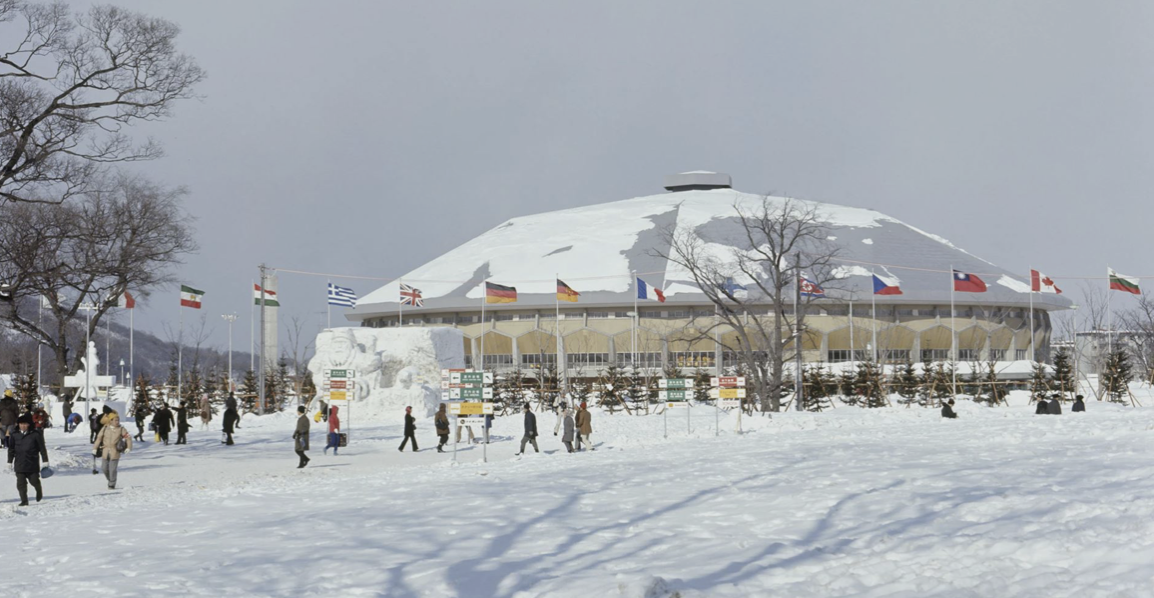Sapporo 1972: 50 years of Olympic legacy

25 Jan 2022 – As the Olympic Winter Games Beijing 2022 draw near, we look at the long-term legacy created by past Olympic Winter Games that are celebrating significant anniversaries this year. The first Olympic Winter Games to be held in Asia, Sapporo 1972, created wide-reaching benefits for the city, for Japan and even for the continent at large. This year marks the 50th anniversary of the Games.
Sapporo itself benefited from several major urban upgrades, which were carried out or accelerated as part of preparations for the Games. These included a new subway system, an underground shopping complex and extensive road network extensions and improvements.
The venues built for the competitions, from the ice rinks to the ski jumps, also continue to benefit the region. Sapporo became a model for cities in snowy climates, and a winter sports hub within Asia.
Also continuing to serve a valuable purpose is the Sapporo Olympic Museum. This highly educational facility chronicles the 1972 Winter Games in detail through a range of educational materials and interactive simulations.
The Games also demonstrated that Asia could stage the Olympic Winter Games. Japan had aimed to host the Winter Games since the 1930s, and Sapporo had been awarded the 1940 edition, only for this to be cancelled due to the onset of World War Two. The successful Winter Olympics paved the way for further Winter Games in Asia: Nagano 1998, PyeongChang 2018 and Beijing 2022.
Meanwhile, the success of Japan’s athletes, particularly its ski jumpers, illustrated to the country that it could compete with the very best in winter sports – and inspired a new generation of winter sports athletes, who could learn their art on the ice and snow where Sapporo 1972 played out.
Urban upgrades
In the 1960s, Japan entered an era of enormous economic growth. People from all over Hokkaido, the nation’s northerly, second-largest island, descended on its capital Sapporo, pushing forward the city’s expansion. By 1970, Sapporo’s population exceeded one million. This new demographic desperately needed better infrastructure.
The Olympic Winter Games Sapporo 1972 served as a catalyst for urban upgrades in and around the city. Hosting the Games also boosted the international profile of the region. A substantial five-year plan of transport and utility upgrades was implemented between 1967 and 1971.
Foremost among these was Sapporo’s new subway system, which opened in 1971. This helped deal with two problems the city was facing: rapid urbanisation and road traffic that was often disrupted by snow.
The Sapporo road network itself was also significantly upgraded, as were the Sapporo Okadama and Chitose airports, meaning that access to the city, its airports and the new Olympic venues was much improved.
The investment in urban upgrades, accelerated by the hosting of the Olympic Winter Games, was estimated at JPY 200 billion (in 1972 values), while investment in sports infrastructure was considerably low, JPY 9.2 billion (in 1972 values).
According to the Hokkaido Bureau of International Trade and Industry, all the investments made in preparation for Sapporo 1972 resulted in a growth of 1.6 per cent in the total levels of productivity in Hokkaido Prefecture, and 3.2 per cent growth in the income of Sapporo citizens every year between 1967 and 1972.
A new generation of Japanese winter sports athletes
Sapporo 1972 was significant for both Japanese and Asian winter sport. As the first Winter Games held in Asia, they inspired people across the continent to watch, and take up, snow and ice disciplines.
The success of the Japanese ski jumpers – known as the Hinomaru Squadron – created national heroes and showed that Asian winter sports athletes could compete with the best from Europe and North America.
Thanks to the high-quality venues constructed for Sapporo 1972, the city was in an ideal position to train up future elite athletes. Local people and those from around Japan were able to utilise the world-class ice rinks, ski slopes, ski jumps and Mount Teine bobsleigh and luge courses.
Venues continuing to benefit the community
The new facilities that were constructed for speed skating, figure skating, ice hockey, ski jumping and the Closing Ceremony are all still in use today. The sliding centre was closed and dismantled around 20 years after the Games.
The Okurayama and Miyanomori ski jumping hills have since hosted several FIS World Cup and World Championship events, while Makomanai Park has become a community sports centre. Its ice skating rinks remain popular, and the indoor arena hosts other sports like basketball and karate.
Mount Teine, which hosted the Alpine skiing events during the Games, has also become a popular ski destination. It has twice been used for the Asian Winter Games, as well as being one of the main facilities for regional and national ski competitions.





